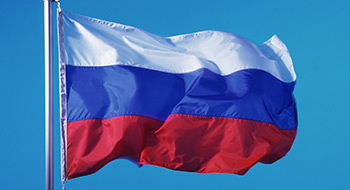

The word Gazprom can literally send shivers down Europeans’ spines. In January 2009, during a freezing winter, Gazprom cut gas supplies to Eastern Europe for two weeks due to a row with Ukraine, the transit country.
Was the company, majority-owned by the Russian government, worried about bad customer service? Not particularly. When the prime minister of Bulgaria, one of the affected EU countries, went to the Kremlin, he waited for hours to get a meeting.
The incident illustrates Gazprom’s attitude toward its European customers: they’ll keep buying Russian gas, no matter what, because there are few alternative suppliers. But the EU, Gazprom’s biggest client, is tired of that. Amid efforts to diversify away from Russian gas, the bloc recently filed charges against Gazprom over unfair competition, which could result in hefty fines for the company.
The controversy embroiling the world’s largest gas producer, distributor and transmitter—along with other issues it faces—has given markets a negative view of the company. But some, who disagree with the market’s assessment, are buying Gazprom’s cheap shares.
Gazprom stock is priced at about 30% of book value. “Those are numbers that are screaming ‘very cheap,’ ” says Atlanta-based Douglas Edman, director of the Investments Group at Brandes Investment Partners, which holds Gazprom shares.
Bleeding Money
Heavy capital spending is one reason the company’s trading at a discount. Since it has 18% of global gas reserves, the largest in the world, Gazprom spends lots of money taking that gas out of the ground and transporting it over long distances to market.
Despite this, Gazprom has been generating free cash flow for years—unlike other energy companies worldwide, which have spent more on their businesses than they’ve generated in cash, notes Edman. “That’s a positive that gets overlooked by the market.”
Trouble With the Biggest Customer
Another issue the company faces is a dispute with its biggest customer, the EU, which accounts for half of sales. The price of natural gas is linked to the price of oil, so oil price declines have caused Gazprom’s price to customers to slide. The current prices aren’t sustainable, but, says Edman, they could encourage more sales to Europe. “Right now, it’s hard to [find] a cheaper source of natural gas anywhere else in the world.”
Despite that, the EU still aims to diversify away from Russian gas.
Edman says new supply options include North America and, if the sanctions fall, Iran, home to the world’s second largest gas reserves after Russia. The European Commission also recently said it’s considering Algeria’s unexploited reserves.
On top of that, a few months ago, the European Commission—the EU’s executive arm—pressed charges against Gazprom over unfair pricing in Eastern and Central Europe, which could result in billions of dollars in fines.
Gazprom is the main or only supplier to eight EU countries. And, the European Commission says, Gazprom charges higher prices than what it charges other European clients— up to 40% higher in some cases—in five of those countries. “Gazprom has been able to [do that] without fearing gas would flow in from resellers,” Margrethe Vestager, the European Commissioner for competition, told a Brussels news conference in April.
Domestic Decline
Even at home, Gazprom is being challenged, which is another reason for its low valuations.
The company used to have a domestic monopoly, but, during the past few years, players such as Novatek and Rosneft have emerged. Gazprom’s domestic market share declined from about 85% a couple of years ago to 70% last year.
Edman believes Gazprom’s home market share will contract to about 50% or 60%.
So will the company’s shares rise? They might, if oil prices go up, Edman predicts. “Another [catalyst] might be a more conciliatory gesture from Russia with regard to Ukraine.”
Yaldaz Sadakova is associate editor of Benefits Canada.
Get a PDF of this article.
